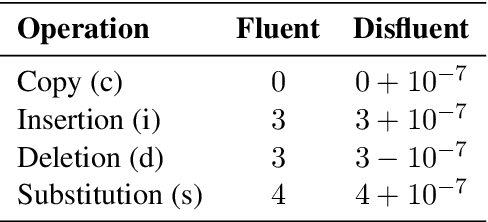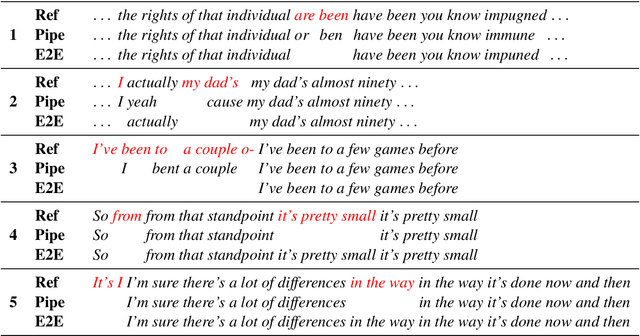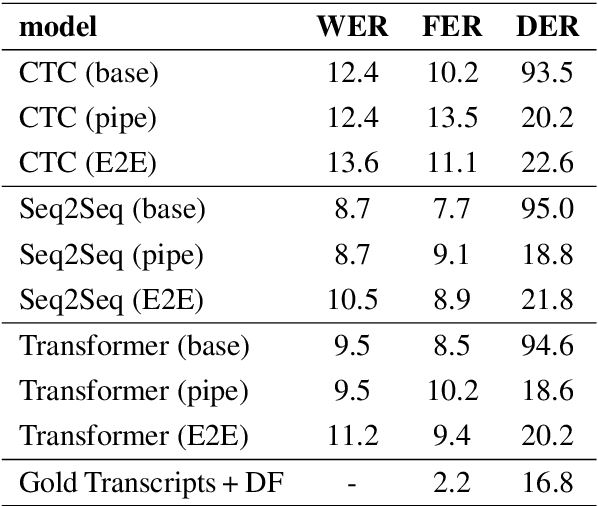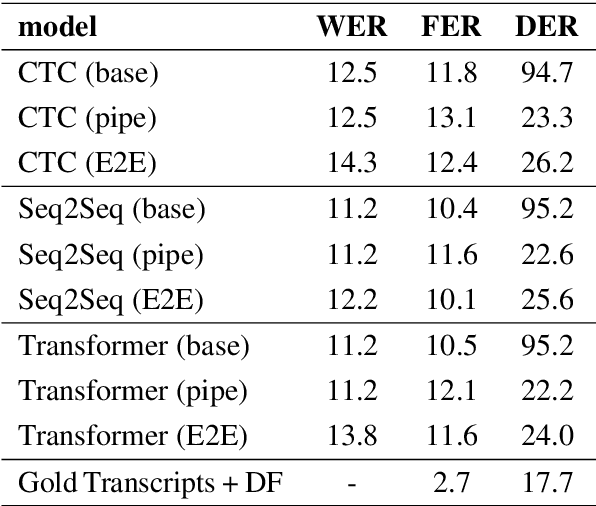End-to-End Speech Recognition and Disfluency Removal
Paper and Code
Sep 28, 2020



Disfluency detection is usually an intermediate step between an automatic speech recognition (ASR) system and a downstream task. By contrast, this paper aims to investigate the task of end-to-end speech recognition and disfluency removal. We specifically explore whether it is possible to train an ASR model to directly map disfluent speech into fluent transcripts, without relying on a separate disfluency detection model. We show that end-to-end models do learn to directly generate fluent transcripts; however, their performance is slightly worse than a baseline pipeline approach consisting of an ASR system and a disfluency detection model. We also propose two new metrics that can be used for evaluating integrated ASR and disfluency models. The findings of this paper can serve as a benchmark for further research on the task of end-to-end speech recognition and disfluency removal in the future.
 Add to Chrome
Add to Chrome Add to Firefox
Add to Firefox Add to Edge
Add to Edge